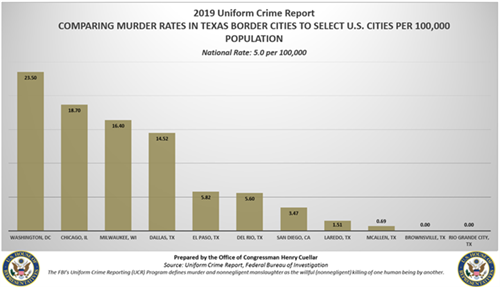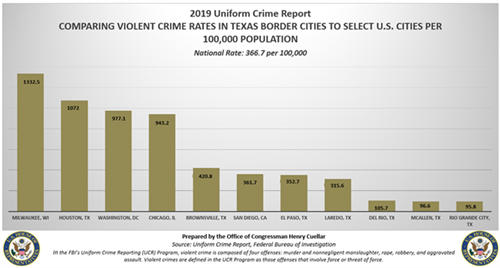Press Release
Rep. Cuellar Releases 2019 FBI Crime Statistics for Texas BorderBorder communities have lower crime rates than non-border major cities
Washington | Charlotte Laracy, DC Press Secretary (202-226-1583); Alexis Torres, District Press Secretary (956-286-6007),
September 29, 2020
Washington, D.C.—Congressman Henry Cuellar (TX-28) released FBI crime statistics from 2019 demonstrating that border communities are safer than non-border major cities in the United States. “As someone who lives and raises their family on the border, I have found the rhetoric about our southern border offers little resemblance to what is on the ground,” said Congressman Cuellar. “Year after year FBI statistics show that crime rates are lower on the border than non-major border cities.” “The reality of our border communities is simple: our crime rates are low, and our residents feel safe because of the efforts of our local, state, and federal law enforcement. As a senior member of the Appropriations Committee, I will continue to fund programs that support our law enforcement and protect our communities. I would like to thank the dedicated law enforcement officers and local leaders at our southern border who keep our communities safe.” Washington DC's murder rate is 23.5 murders for every 100,000 residents, according to the FBI’s annual Crime in the United States report. Border communities like Laredo and McAllen saw fewer than 2 murders for every 100,000 residents. In addition, Milwaukee’s crime rate is over 1332 violent crimes for every 100,000 residents. Comparatively, Rio Grande City’s crime rate is just over 95 violent crimes for every 100,000 residents.
Comparing Violent Crimes Border Cities to Select U.S. Cities Per 100,000 |



